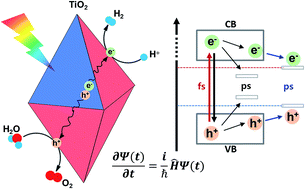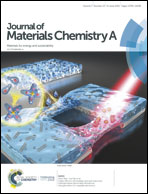Photocatalytic activity of TiO2 nanoparticles: a theoretical aspect
Abstract
TiO2 photocatalysts have been widely used in the field of renewable energy and environmental clean-up. However, the large band gap of TiO2, along with the fast recombination of charge carriers, significantly lowers the photocatalytic performance. Many strategies have been developed to address this issue, including nanostructuring, introducing oxygen defects, chemical doping, surface sensitization, and employing nanocomposites. Studies of light absorption and especially charge recombination of modified TiO2 particles by experimental approaches are limited by the entangled parameters introduced by experimental conditions. Theoretical approaches have provided useful insight due to the systematic modelling of TiO2 particles. This review encompasses the theoretical approach to investigate the photocatalytic activity of modified TiO2 nanoparticles. The density functional theory (DFT) methods used to describe the properties of TiO2 systems and modelling of the geometric and electronic structure to properly describe the actual nanoparticles used in experiments are discussed. The chemical modification strategies are discussed in terms of band engineering, and charge carrier separation and diffusion in comparison with experimental results. The surface redox reactions are discussed with regard to thermodynamics and kinetics.

- This article is part of the themed collection: Recent Review Articles


 Please wait while we load your content...
Please wait while we load your content...